Ever feel like your ecommerce store is getting plenty of visitors but not enough sales? You’re not alone. The ecommerce conversion rate is one of the most important metrics for any online business, yet many store owners struggle to improve it. After all, what good is traffic if it doesn’t lead to actual revenue?
That’s where ecommerce conversion rate optimization comes in—and no one does it better than OptinMonster. As a leading CRO tool, we help ecommerce businesses turn passive website visitors into engaged customers, driving more sales with powerful lead generation and conversion-focused strategies. And if you’re looking for the best resource to learn how to boost your ecommerce conversion rate, this blog is it.
In this guide, we’ll break down:
- What Is Ecommerce Conversion Rate
- Average Ecommerce Conversion Rate Benchmarks
- What Is a Good Ecommerce Conversion Rate
- How Are Ecommerce Conversion Rates Measured
- Ecommerce Conversion Rate Optimization
If you want to stop losing potential customers and start maximizing every visit to your store, keep reading.
What Is Ecommerce Conversion Rate
Ecommerce conversion rate specifically refers to the percentage of website visitors who make a purchase. It’s a focused metric that hones in on your site’s primary goal: selling your products or services.
When discussing the ecommerce conversion rate, the formula to calculate this is:
Ecommerce conversion rate = number of orders / number of website visits
For example, if your site receives 100 visits and achieves 5 orders, then your ecommerce conversion rate would be (5/100) = 0.05, or 5%.
The terminology for this metric can vary depending on the data source you’re consulting. In Google Analytics, for instance, it’s labeled as “ecommerce conversion rate,” which has become the standard term for this measurement.
Recommended reading: What is a Good Conversion Rate?
Average Ecommerce Conversion Rate Benchmarks
As per the latest study, the average ecommerce conversion rate is 3.65%.
When discussing average ecommerce conversion rates, it’s essential to consider various dimensions that can influence these figures. Here’s a breakdown of how these rates can differ across devices, industries, regions or countries, and marketing channels.
eCommerce Conversion Rate by Device:
- Desktop: Desktop users often have higher conversion rates, sometimes averaging between 3% and 5%, due to a more stable browsing experience and easier navigation.
- Mobile: Mobile conversion rates are typically lower, averaging around 1% to 3%, partly due to the smaller screen size and sometimes less optimized mobile shopping experiences.
- Tablet: Tablet conversion rates can be similar to desktops, often falling in the 3% to 4% range, as they balance mobility and usability.
eCommerce Conversion Rate by Industry:
- Fashion and Apparel: These sites may see higher conversion rates, around 2% to 4%, especially if they have a strong brand presence.
- Electronics: Given the higher price points and more extensive research typically involved, conversion rates might be lower, around 1% to 2%.
- Home Goods: Conversion rates in this industry vary widely but often average around 2% to 4%.
- Luxury Items: These tend to have lower conversion rates due to the high investment, often below 1%.
eCommerce Conversion Rate by Region or Country:
- United States: The U.S. sees an average conversion rate of about 2% to 3%.
- United Kingdom: The UK often has slightly higher conversion rates, potentially 3% to 4%.
- Europe: Conversion rates in Europe can vary widely, with averages ranging from 1% to 3%.
- Asia-Pacific: This region can see lower conversion rates, often between 0.5% to 2%, due to diverse markets and consumer behaviors.
eCommerce Conversion Rate by Channel:
- Email Marketing: This channel often sees the highest conversion rates, sometimes as high as 5% to 6%, due to its targeted nature.
- Organic Search: Conversion rates from organic search can average around 2% to 4%, as these users are often actively seeking specific products or services.
- Paid Search: Paid search conversion rates can be similar to organic, around 2% to 3%.
- Social Media: These rates are usually lower, around 1% to 2%, as users on these platforms are not always in a buying mindset.
- Direct Traffic: When users come directly to a site, conversion rates can be pretty high, around 3% to 4%, as these are often returning customers.
It’s crucial to note that these figures are averages and can fluctuate based on many factors, including market trends, seasonal campaigns, and changes in consumer behavior. For the most accurate benchmarking, businesses should compare their conversion rates against the most relevant and recent data within their niche and market.
What Is a Good Ecommerce Conversion Rate
A good ecommerce conversion rate falls between 1% to 2%.
However, it’s widely accepted that a good ecommerce conversion rate is one that aligns with your specific industry benchmarks while also taking into account the unique aspects of your business.
For some, a good conversion rate might be higher than 2%, especially if they are in a niche market with a strong customer base or if they have optimized their user experience and sales funnel effectively.
It’s important to remember that conversion rates can vary widely based on a number of factors, including:
- Product Type: Different industries will have different average conversion rates. For example, luxury goods may have a lower conversion rate due to their higher price points, while more affordable items may have higher rates.
- Traffic Source: Conversion rates can differ based on where your traffic comes from. Organic search traffic might convert differently than traffic from social media or email marketing.
- Market Position: If you’re a well-established brand with a loyal customer base, your conversion rates may be higher than those of a new entrant to the market.
- Website Optimization: Sites that are optimized for conversions, with a user-friendly design, clear calls-to-action, and a seamless checkout process, tend to have higher conversion rates.
- Seasonality: Conversion rates can fluctuate during different times of the year, such as holiday seasons or during sales events.
Ultimately, a good ecommerce conversion rate is one that is improving over time. It’s less about hitting a specific number and more about continually testing and optimizing your website to increase conversions relative to your past performance.
How Are Ecommerce Conversion Rates Measured
The ecommerce conversion rate of a website can be tracked using various web analytics tools, with Google Analytics being one of the most widely used, focusing primarily on data from the website itself.
However, there are several other methods to monitor this key performance indicator. Some popular alternatives include:
1. MonsterInsights
A user-friendly plugin for WordPress sites that simplifies the integration of Google Analytics, allowing for easy tracking of ecommerce conversion rates directly from the WordPress dashboard.
Recommended Reading: MonsterInsights Review: Is This Analytics Plugin Worth It?
2. Segment
This tool collects data from various platforms, including online advertising channels like Facebook and Instagram.
3. Heap
Similar to Segment, Heap compiles data from various sources and offers enhanced customization for tracking specific events, offering a different approach than Google Analytics.
4. Triple Whale
This tool provides a comprehensive view of a customer’s interactions with a brand across multiple platforms, including social media and search engines.
These analytics tools typically operate by having you insert a piece of code onto your website. This code, once configured with the help of a marketer or developer, can track the start and end of a visitor session and identify when a purchase is made.
Recommended Reading: How to Set Up Google Analytics eCommerce Tracking for WooCommerce
Choosing the most suitable analytics tool will depend on factors such as your budget, the channels through which you acquire customers, and the level of your advertising expenditure (with higher spending often necessitating more sophisticated analytics and attribution capabilities).
Ecommerce Conversion Rate Optimization
Let’s look at some of the top proven ways to boost your eCommerce conversion rate.
1. Attract Qualified Site Visitors
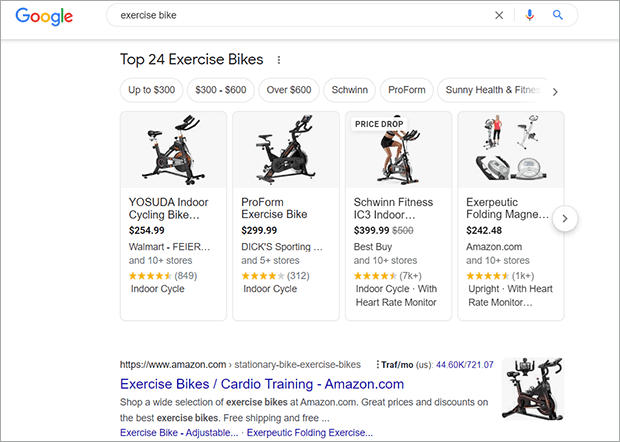
These days, most online shopping purchases start with a Google search. The website visitors you get from those searches often have very high transactional intent. This means they’re eager to find, and buy, a solution to their problems.
That’s why search engine optimization (SEO) is such an effective way to boost your website conversion rate. To attract more search traffic:
- Use transactional keywords in page titles, meta descriptions, and content
- Create high-quality and informative content
- Improve website load spee
- Make your website user-friendly and easy to navigate
- Consider purchasing high-intent Google Adwords campaigns
2. Start a Referral Program
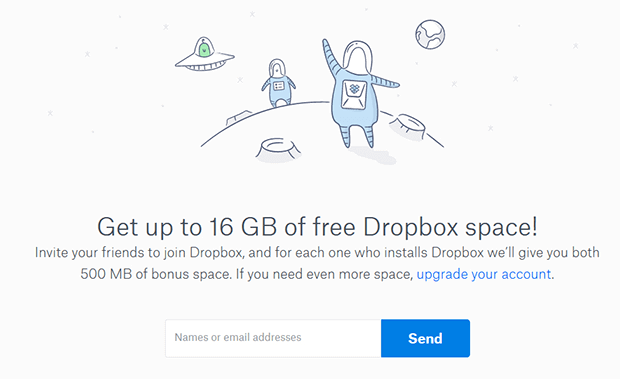
A referral program is where you reward existing customers for sharing your website with friends and family. This can improve eCommerce conversion rates in several ways:
- Encourages past customers to interact with your brand
- Builds trust and credibility with new customers
- Increases brand awareness and reach
- Improve customer loyalty and boost average order value by rewarding repeat purchases
3. Optimize Site Navigation

If you want more visitors to convert, you need to make that process easy for them. One simple way is to make sure your site is easy to navigate.
Make the navigation menu clear and easily accessible on every page. Use clear labels for menu items and organize the menu by grouping related items.
Check that your menu is responsive and works on all devices. Include a search bar that’s easy to find and use.
You can also clear calls-to-action (CTAs) throughout the site. One example would be linking to your best selling products from the About page. These CTAs can guide users towards the information they want and the conversion you want.
4. Describe Products in Detail
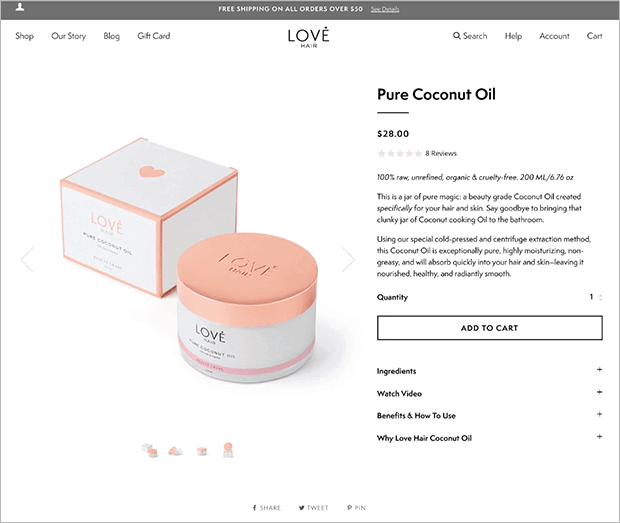
The content on your product pages need to do a lot of heavy lifting when it comes to selling your products and driving conversions. Here are some important details to add to your product descriptions:
- Keywords related to the product to improve search engine visibility
- Unique selling points and benefits of the product
- Size, weight, and other relevant details to help customers make informed purchasing decisions
- High-quality product images to give customers a better understanding of the product
- Videos or 360-degree views to give a more interactive customer experience
5. Show the Shopping Cart

You don’t want customers to just read your awesome product descriptions, you want them to add items to their carts!
Make sure the add to cart and checkout buttons are prominently displayed on every page of your site. Many sites make these buttons contrasting colors with larger fonts.
Don’t sacrifice clarity for the sake of creativity, especially for these high-value CTAs. Use intuitive and familiar design elements such as a shopping bag or cart icon in the upper right corner. This reduces friction for the customer.
6. Simplify the Checkout Process

We all want customers to make it to the checkout page, but checkout is a page with one of the highest abandonment rates. So how can we prevent that from happening?
Keep the process simple and straightforward, with as few steps as possible. Offer guest checkout options for customers who don’t want to create an account.
Provide clear calls-to-action and progress indicators to guide customers through the process. You can also include progress-saving features, such as saved shopping carts, so visitors can come back later without starting over.
You also want to address the top reasons for cart abandonment, which included unexpected costs and doubts about security. You can do this by:
- Clearly displaying order totals with taxes, fees, and shipping costs
- Providing clear shipping options with delivery times and cost estimates
- Offering a variety of payment options, including credit cards, PayPal, and other popular options
- Enabling SSL encryption and appropriate security badges
Finally, make the process mobile-friendly, as more and more customers are using mobile devices to make purchases.
7. Use Cart Abandonment Recovery Software
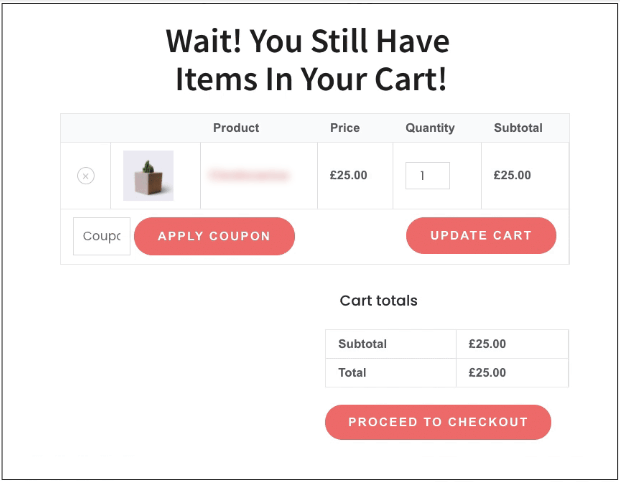
No matter how hard you try, there will always be shoppers who abandon their carts. Don’t just let them wander off into the void! Cart abandonment software automatically sends email reminders to customers who have added items to their shopping cart but haven’t completed the purchase.
Cart abandonment software has some major benefits:
- Follows up automatically without any additional input from you
- Provides targeted messaging and special offers to encourage customers to complete their purchase.
- Offers data and insights into why customers are abandoning their carts so you can make improvements
- Integrates with other eCommerce tools and platforms for a seamless experience
- Provides a low-cost solution for boosting sales and increasing conversion rates.
- Can be tested and optimized over time to continuously improve results.
8. Offer Chat Support
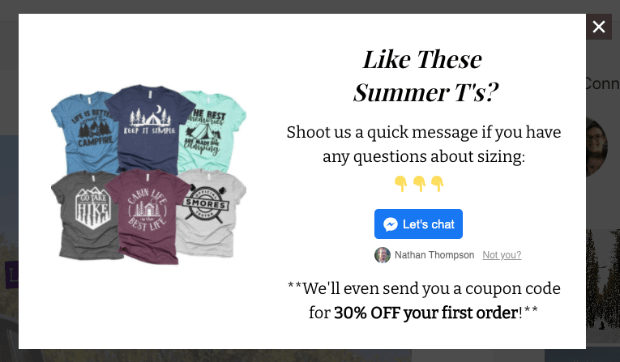
Live chat or chat bots functionality can improve conversion rates by providing immediate assistance to shoppers.
Improving customer experience can also increase trust and credibility. Chat support can increase sales by offering product recommendations and support during the purchasing process. Finally, chat support is more efficient than phone support since one support agent can help multiple customers at once. This improves your customer service efficiency and frees up time and resources for other tasks.
9. Build Trust

Even though online shopping is extremely common now, many customers still worry about giving their financial and personal information online. These objections are easy to overcome by using SSL encryption, displaying security badges, and offering clear privacy and data usage policies.
10. Show Social Proof
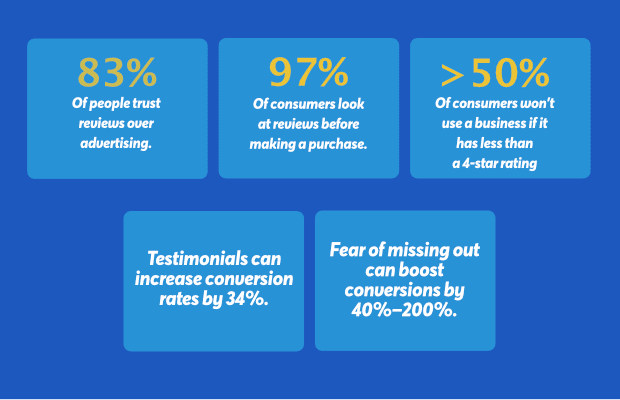
Customers may also be afraid of spending money on a product that doesn’t deliver. Social proof can relieve these concerns by showing what other customers like them are doing.
Some types of social proof include:
- Customer reviews
- Ratings
- Testimonials
- Purchase notifications
- Industry awards, accreditations, and certifications

Whatever the format, the principle of social proof remains the same: people look to the behavior of others to decide what the best decision is. When a shopper sees thousands of 5-star reviews, they’re more likely to believe the product and brand are trustworthy and reliable.
11. Design for Mobile Devices

More shoppers than ever are using smartphones, so your online store and digital marketing campaigns have to work on mobile. Here are a few simple ways to optimize your site design for mobile users:
- Keep your layout simple and easy to navigate.
- Use large, easily tappable buttons
- Make sure that all images and text are clearly visible on smaller screens
- Offer a responsive design that adjusts to different screen sizes and orientations
- Use a mobile-friendly checkout process with a minimum number of steps
- Provide a search bar to help customers find products quickly and easily
- Offer touch-friendly navigation options, such as swipeable menus or carousels
- Use a fast-loading design to reduce frustration and improve the user experience
12. Allow Returns and Exchanges
It may seem counterintuitive for returns and exchanges to boost conversion rates. But a customer who’s nervous about fit or otherwise being unsatisfied with their purchase may not buy something if they can’t return or exchange it easily. On the other hand, if they know your company is dedicated to making sure they’re happy with the product, they’ll be more likely to click Add to Cart.
13. Offer Free Shipping
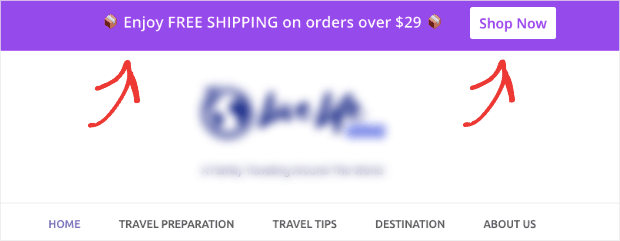
Offering free shipping can significantly improve conversion rates in eCommerce. Free shipping removes one of the biggest barriers to making a purchase: the cost of shipping.
In addition, offering free shipping can help businesses stand out from their competition and increase brand loyalty. This is because customers are more likely to return to a business that offers free shipping and make repeat purchases.
Additionally, offering free shipping can lead to an increase in the average order value, as customers may add additional items to their cart to reach the minimum threshold for free shipping.
Learn how to add a free shipping bar to your online store.
14. Build Your Email List
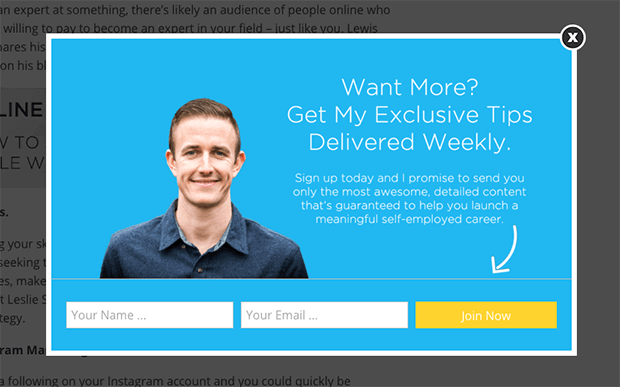
No matter how hard you try, there will always be visitors who aren’t quite ready to buy. This is where an email marketing strategy can help.
Building an email list provides a direct channel to communicate with potential customers. Instead of losing them forever, you can keep them interested in your brand until they’re ready to buy.
Email marketing can also improve conversion rates with existing customers. Email campaigns can be used to re-engage customers over time. This can increase customer lifetime value. Customers who have opted in to receive emails are more likely to make repeat purchases over time.
Finally, email marketing is a cost-effective way to reach customers and drive sales. It has one of the highest ROI (return on investment) of all digital marketing channels.
15. Accept Different Payment Methods

Just as many in-store purchases are now made with credit cards because fewer people carry cash, digital payment methods have also evolved. When you accept multiple payment methods, you make the purchase process more convenient to more customers.
Depending on your business model, you may consider accepting:
- credit or debit cards
- digital wallets
- ACH
- Buy Now Pay Later
- payment plans
- and more
16. Split Test Your Marketing Strategies
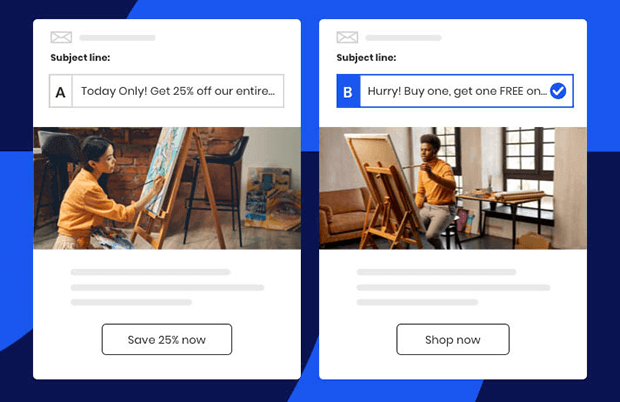
Split testing, also known as A/B testing, is a process of testing two or more versions of a website or marketing campaign to determine which version performs best. This can be a valuable tool for improving conversion rates by showing you hard data about what works and what doesn’t.
Here are some elements you can split test:
- Call to action language, placement, and design
- Landing page design
- Product descriptions
- Checkout process
- Email campaigns
Over time you can gather lots of data about how to increase conversions.
Eczema Company increased conversions 158% with split testing!
17. Cross-Promote and Upsell Strategically
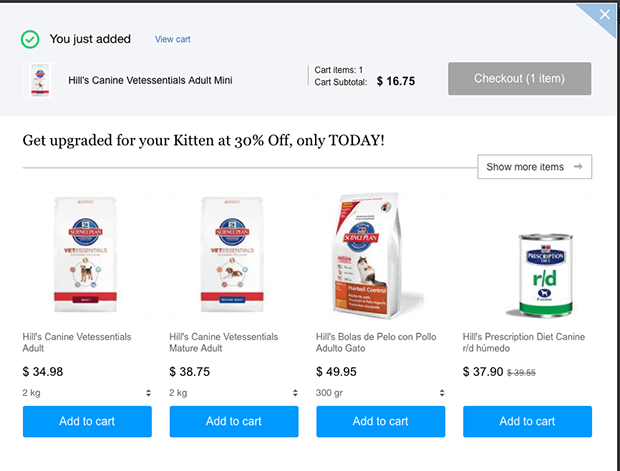
Upselling and cross-selling are sales techniques aimed at increasing the value of each transaction. They work by offering customers additional products or services that upgrade or fit with their original purchase.
A well-timed and well-priced upsell can tip a customer from abandoning their cart to completing the purchase. Smart product promotion can also increase customer satisfaction with the entire purchase.
18. Use Popups (Carefully)

Popups can improve eCommerce conversion rates if used correctly. Many of the conversion optimization tips we’ve discussed in this article can be done with popups:
- Display offers and promotions that motivate customers to complete a purchase.
- Build an email list by offering an incentive, such as a discount or free shipping, in exchange for an email address.
- Offer complementary products or services
- Recover abandoned carts by offering discounts or other incentives
- Show social proof, such as customer reviews or purchase notifications, to increase customer confidence in making a purchase.
It’s important to use popups carefully. They can negatively impact the user experience if they’re too intrusive or poorly designed. Popups should be targeted and relevant, not too frequent, and should have a clear and concise CTA.
The easiest way to design high-converting popups is with OptinMonster.
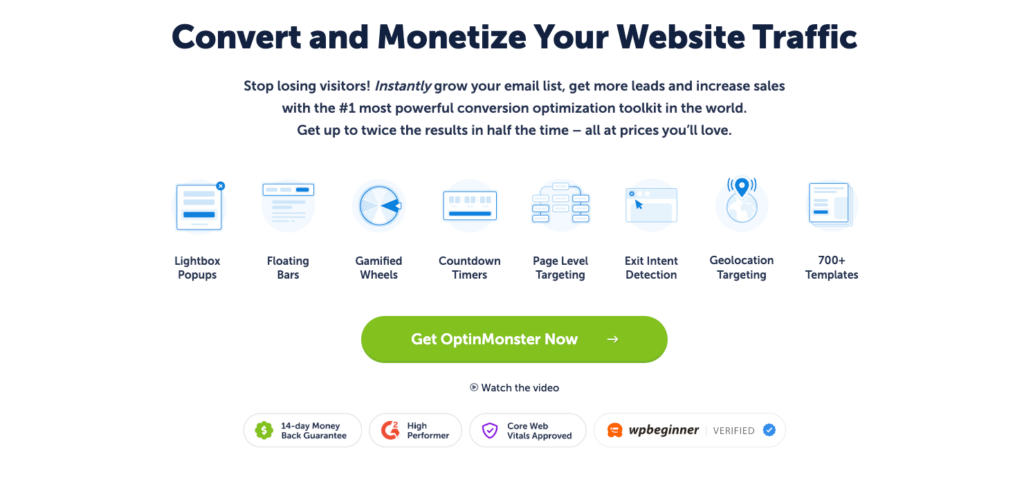
OptinMonster is a powerful conversion optimization tool that can help boost eCommerce conversion rates. The platform is easy to use and offers a range of unique features to help businesses drive more sales and revenue.
OptinMonster’s drag and drop builder makes it simple to create attention-grabbing optin forms, popups, floating bars, and slide-ins that are specifically designed to increase conversions.
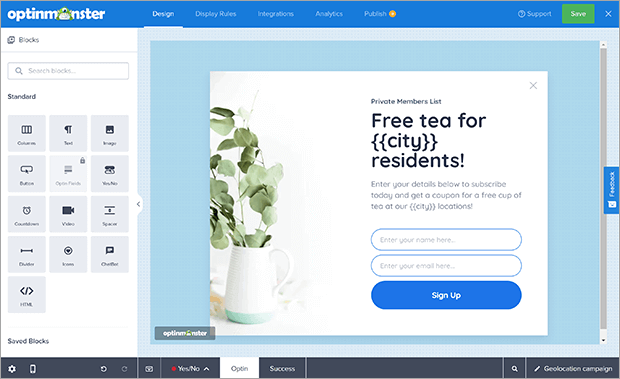
The platform’s advanced targeting and behavior personalization options allow businesses to deliver the right message, to the right people, at the right time.
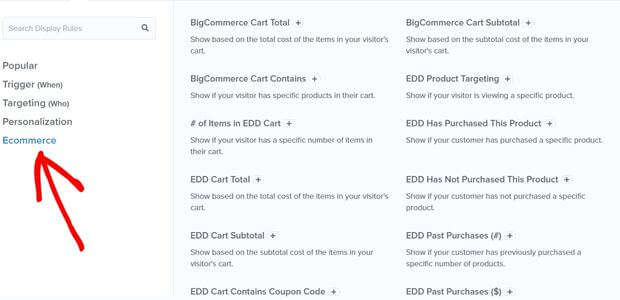
Some of the key features of OptinMonster include:
- cart abandonment recovery
- page level targeting
- Exit-Intent Technology®
- geolocation
- retargeting

The platform also integrates with a variety of popular eCommerce platforms, including Shopify, WooCommerce, Magento, and others, making it easy to set up and start boosting conversions.
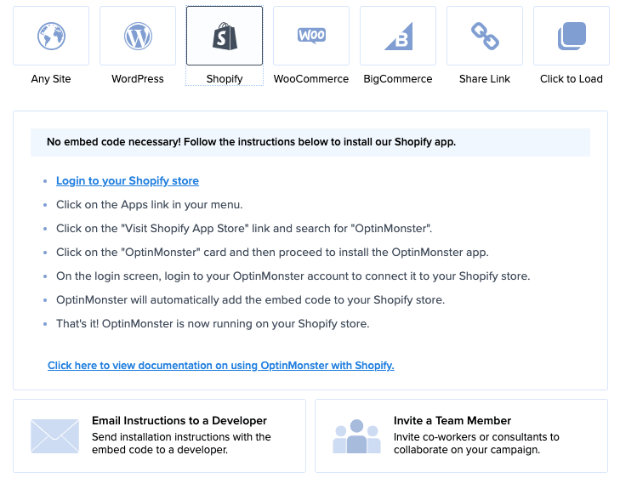
Additionally, OptinMonster’s A/B testing and analytics tools help businesses continually optimize their campaigns, resulting in even higher conversion rates.

Whether you’re a small business or an enterprise, OptinMonster can help you grow your eCommerce success with ease.

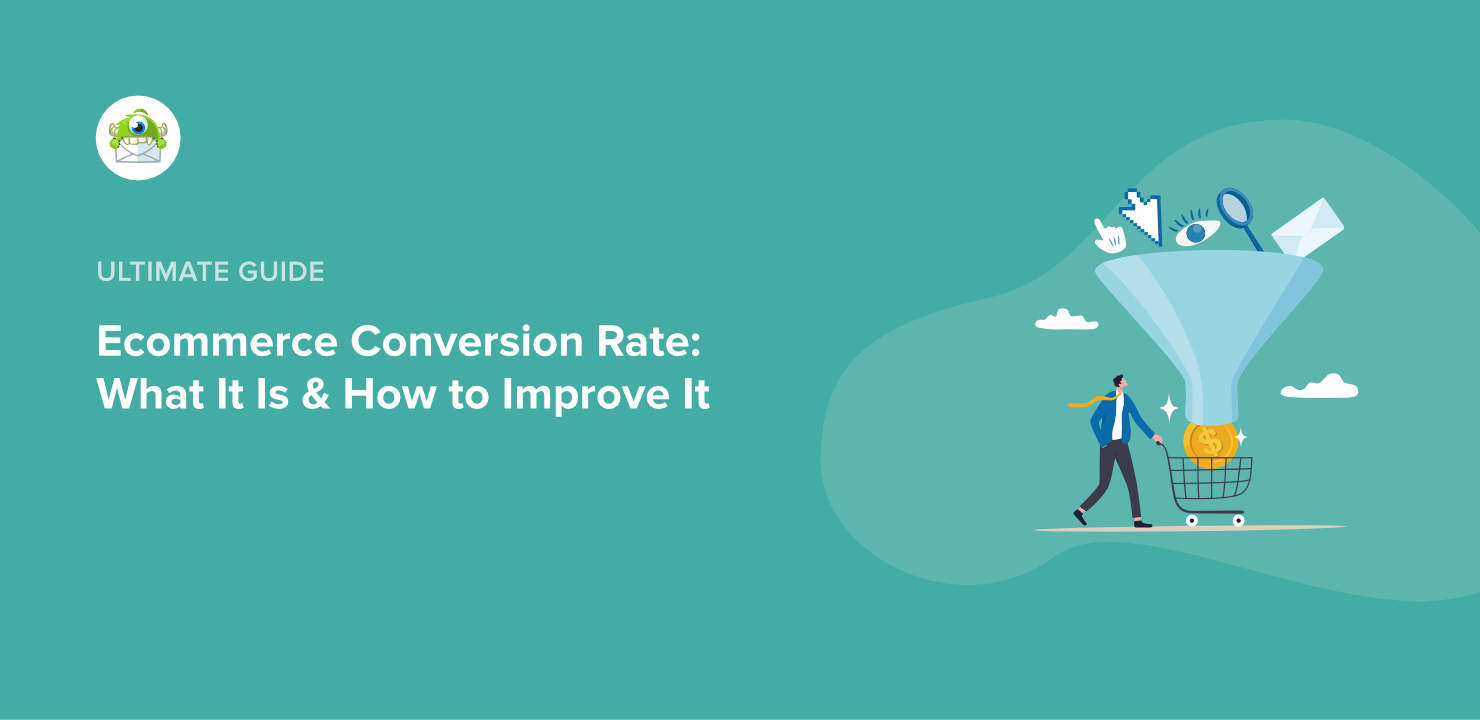
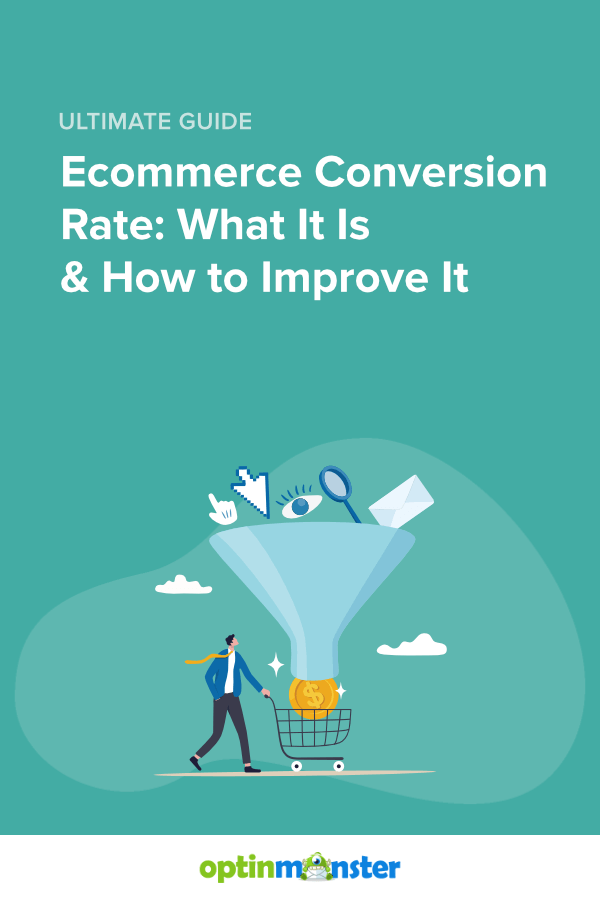








Add a Comment